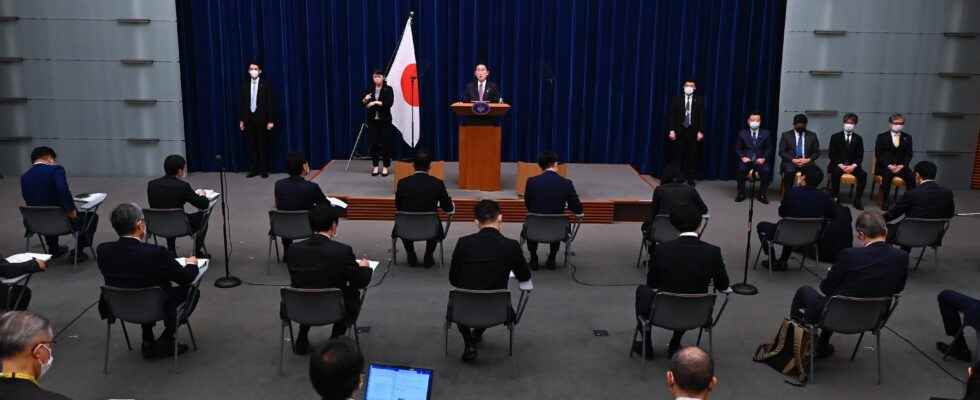After Germany, it was the turn of Japan, another loser of the Second World War, to break with the pacifism that had prevailed since 1945. Gone was the strict defensive posture, in accordance with article 9 of the 1947 Constitution affirming the renunciation of the archipelago to war. On December 16, the Japanese government unveiled a revolutionary new military doctrine. Make way for the possibility of carrying out “counter-attacks”, that is to say of hitting sites in enemy territory which would represent a potential threat. In short, Japan reserves the right to carry out preventive attacks, even if it refuses to use this term.
So decided the Prime Minister, Fumio Kishida. Considering that the reinforcement of defense capacities constituted the most “urgent subject in this difficult security environment”, he validated the revision of key documents. The officially identified threats are North Korea and its nuclear and missile programs, Russia due to the invasion of Ukraine, but above all China, now presented as an “unprecedented strategic challenge” for the international order. . In 2013, Beijing was peacefully invited into a “mutually beneficial strategic partnership”. The times have changed. It must be said that, since then, Beijing has continued to develop militarily and increases the pressure on Taiwan and the Japanese southwest.
Regarding the equipment acquisition plan for the next five years, the emphasis is on offensive means and therefore on long-range missiles, such as the American Tomahawk cruiser models, and the combat aircraft project of the future, to be worked out with the United Kingdom and Italy. All of this benefits from an unprecedented budgetary effort since the government wants to increase armament expenditure by 1 to 2% of GDP by 2027, to bring it to around 80 billion dollars, which will place Japan in third world rank behind the United States and China.
“The political context has changed in Japan”
These choices are a new step in a process that began several years ago. In office from 2012 to 2020, Prime Minister Shinzo Abe made many cuts to pacifist dogma: in 2015 he authorized the Japanese army to intervene in the event of an attack by an ally abroad, based on a reinterpretation (expressed the year before) of the Pacifist Constitution. He then sought – unsuccessfully – to revise it. This movement is supported by the United States, which is pushing its allies to assume a greater share of their defense and has welcomed the new doctrine.
Unsurprisingly, China did not like it, calling Japan’s policy a “factor of regional tension and confrontation”. In retaliation, it organized from December 16 to 26 exercises to simulate an attack on the islands in the south-west of the archipelago, with its Type 055 missile destroyers. North Korea, for its part, denounced a “policy of aggression” and sees in it the preparations for an invasion. Even South Korea, which keeps the memory of Japanese colonization between 1910 and 1945, expressed reservations because the doctrine could lead the Japanese army to intervene in the peninsula.
According to a poll by the centre-left daily Asahi, 46% of Japanese people approve of the text, against 48% who oppose it. “Japan had better learn the lessons of history and take the initiative to ease tensions in East Asia, while having independent diplomacy,” said Takehito Yoshida, a student peace activist. “There was no debate in Parliament. The principle remains to follow the will of the United States,” laments Satoshi Shirai, from Kyoto Seika University.
Despite this, there is no indication of massive protests like those organized against Shinzo Abe’s projects of 2014 and 2015. “The political context has changed in Japan because of the war in Ukraine. There is an awareness by the public opinion that a major conflict was possible in the 21st century. If it is in Europe, it is also in East Asia”, observes Christopher B. Johnstone, researcher at CSIS, an American think tank . The arms race has only just begun in East Asia.
